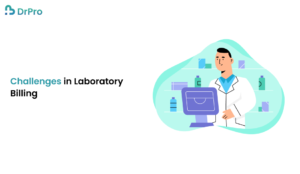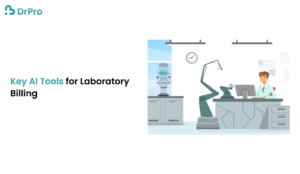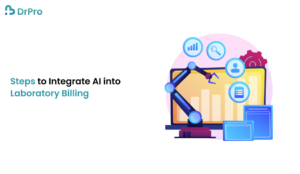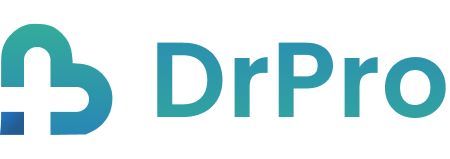Picking up the Gadgets and Laboratory Billing services are significant in the industry of healthcare but always face some issues such as coding mistakes, claim rejections, and insurance complexity. The management of these tasks [management of cash resources and timely procurement of required goods and services] is crucial for laboratories to sustain cash incomes and deliver patients’ services. From the main idea, Artificial Intelligence (AI) is transforming billing in laboratories by providing technologies that assist in reducing time wastage and enhancing accuracy.
This blog provides insights into how the implementation of AI is revolutionizing laboratory billing, the problems that this tackles, and how laboratories can employ AI.
Challenges in Laboratory Billing

There are several typical issues in managing laboratories’ billing. Such problems entitle delays, costs increase, and extra load on the billing department.
1. Frequent Coding and Billing Errors
CPT and ICD codes must be entered correctly and additional charge codes must be manually entered for processing. Mistakes including even a single digit can result in claim rejections or lower payment rates that take extra time to fix.
2. High Claim Denial Rates
Denial of charges is among the biggest challenges in laboratory Management. They are usually a result of inadequate patient details, wrong code, or failure to follow insurance requirements. These rejections require time and postpone payments.
3. Time-Consuming Manual Processes
A high number of Laboratory Billing organizations today continue to use manual billing systems in their organizations. Claims that can involve data entry, claim verification, and error checks may involve human errors while they also consume a lot of staff time.
4. Complex Insurance Requirements
Insurance policies depend on the insurance carrier, patient characteristics, and their domicile. The requirements and the changes that need to be made for the billing systems may be very confusing indeed.
5. Lack of Real-Time Insights
Current billing systems mostly do not allow one to monitor the results of billing in real-time. In the absence of such details, laboratories cannot tell when they are likely to encounter problems with billing or when the billing process is going to take too long.
How AI Enhances Laboratory Billing
AI provides solutions to these challenges by being able to do things such as repetitive work, being less error-prone than humans, and offering the best recommendations. Perhaps, unraveling processes through which Artificial Intelligence helps in laboratory billing would be an interesting thing to consider.
1. Reducing Coding and Billing Errors
Computerized assistant applications integrate machine learning to explore the billing data and recognize frequent coding errors. They can also compare codes with the policies of insurance and indicate differences before submitting a claim. This increases accuracy as compared to hand entry and less likelihood of rejection.
For instance, AI may relate test procedures to the right CPT codes hence matching billing with the regulatory frameworks.
2. Streamlining Claims Processing
Much of our previous discussion has addressed the issue of efficiency in handling claims processing, and we have seen that there are many ways in which overall organizational performance and the completeness of data processing can improve through efficient claims processing.
The claims submission process can be made faster and more efficient since there is the use of AI systems. By reconciling and validating patient data and coding before submission, the element of denial is minimized by AI.
Some nodes also predict or aggregate claims that are likely to be denied so that the billing teams can deal with them before approval is rejected.
3. Automating Data Entry
This type of data entry has always proved to be slow and prone to a lot of mistakes. This task can be easily performed using AI, which looks for information inside patient records, test results, or insurance-related docs. This makes work easier and makes sure that all data entered is correct.
Automated data entry solutions, such as the use of AI for Optical Character Recognition (OCR) respectively can read articles on paper and turn them into digital form without requiring a human touch.
4. Simplifying Insurance Navigation
The lab can also use AI systems to find policies and requirements that are relevant to the Laboratory Billing. As such these tools can identify policy changes and adapt the billing process to meet the changes to avert non-compliance.
For instance, it can match patient status and insurance status so that the claims will not be denied due to insurance problems.
5. Providing Real-Time Insights
AI write-ups of billing performance dashboards provide value-added processing in real time. Claims service can follow the level of accepted and rejected claims, the time required to complete payments, and the revenue pattern.
Key AI Tools for Laboratory Billing

There are many AI tools developed aiming to solve issues around billing in laboratories. Here are some of the most effective ones:
1. AI-Driven Claim Scrubbing Software
As an indicator, reviews claim scrubbing software clear errors and inconsistencies in the assertions he is to make before submitting them. This also minimizes denial as well as enhances the rate of operations of reimbursement.
2. Automated Data Extraction Platforms
Getting information from electronic patient records of patients and insurance documents among others, AI platforms that support data extraction can present billing information in a well-organized format.
3. Predictive Analytics for Revenue Cycle Management
This is a shortcoming because there is always a way to make statements based on previous experiences in billing, and future trends and examine any holdups to the revenue cycles through some of these advanced tools of predictive analytics.
4. Natural Language Processing (NLP) for Coding Assistance
Bionlp can be used to help systems automatically process and interpret clinical notes and recommend precise billing codes that need not be done manually.
5. Integrated Payment Systems
Integrated and higher levels of payment processing through artificial intelligence in payment technologies make the payment systems efficient through real-time processing in addition to checking the legal billing requirements.
6. Compliance Monitoring Tools
Some of the tools are used to render easy compliance of the Laboratory Billing with changes in the law regarding billing and other hospital regulations.
Steps to Integrate AI into Laboratory Billing

AI integration in the context of laboratories particularly in terms of billing cannot be a trivial task. Here are the steps laboratories should follow:
1. Assess Your Current Billing Workflow
Learn about your current billing procedures, evaluate your billing workflow, and find out where on the workflow AI may be most effective.
2. Choose the Right AI Solution
Identify and choose those AI tools that can be useful for your Laboratory Billing. For instance, if coding errors are an important problem, write about AI coding aids.
3. Involve Key Stakeholders
Engage billing staff, IT teams, and management in the implementation process. Their input will help ensure a smooth transition.
4. Plan for Data Migration
When migrating from a conventional environment to an environment that incorporates AI, consider how to transfer data of the patients and billing to prevent interruptions.
5. Train Your Team
Although the billing staff needs to be conversant with AI tools, they should undergo some training on how to work on the tools effectively. Understanding the system will also facilitate its proper cause and effect to reap the best effects out of the program.
6. Run a Pilot Test
It then advises carrying out a pilot study to test the feasibility of the AI system in a given environment. It means applying the results to determine what changes may be necessary before going to large-scale implementation.
7. Monitor and Optimize
On this topic, it is advisable to constantly follow the performance of the developed AI system and make changes according to the objectives of your Laboratory Billing.
8. Ensure Ongoing Support
Look for an AI solution provider who will be able to provide technical support and fresh updates to the software.
Balancing Compliance and Costs
This paper also identified that for laboratory management that seeks to adopt AI for billing, the following metrics may be critical; compliance with healthcare standards shall be a priority in the adoption of AI for billing, and costs associated with AI implementation for billing shall be appropriately addressed by laboratories.
1. Ensuring Compliance with Regulations
He believes that AI systems are subject to the legal requirements of the healthcare industry most prominently HIPAA in regards to patient data. In choosing the vendors, laboratories should ensure that their vendors are willing to address data concerns and rules/ regulations.
2. Evaluating Costs
However, as with anything that involves innovation and solutions based on artificial intelligence, there is always a cost and in this ca, these are the costs of AI solutions, where the savings in time, the errors that will be saved in the course of doing business, and the revenue that such solutions bring in the long-run outweighs the cost. The financial implication should also be assessed thus; the laboratories should perform an analysis between the costs to be incurred and the benefits to be gained.
Benefits of AI in Laboratory Billing
AI offers several advantages that make it a valuable investment for laboratories:
Improved Accuracy: There will be more efficiency in coding which results in fewer claim denials.
Faster Processing: Computerised claims processing is highlighted as it reduces the time it takes for data encoding and filing of claims.
Better Compliance: AI tools assist laboratories to keep them informed and ready with what is current in regulations.
Cost Savings: They also cut expenditure which is associated with administrative burdens.
Enhanced Insights: In this case, the real-time analysis of the NCS can facilitate the right decisions being made effectively.
Conclusion
With recent technological advancements, AI is becoming useful in tackling a variety of problems including incorrect coding, claim Rejections, and manual methods in hopes of changing laboratory billing. AI keeps the billing process elaborate and efficient, giving ample time for laboratory services to assist patients through diagnosis procedures effectively.
Any laboratory interested in the implementation of AI technologies has to clarify potential strategies and work with reliable vendors to guarantee the success of such initiatives. AI systems are no longer a quirky addition to healthcare; on the contrary, experts call them necessary to meet the laboratories’ growing demands.
FAQs
Q1. How does AI reduce errors in laboratory billing?
AI uses advanced algorithms to detect and correct coding and data entry errors. Cross-checking Laboratory Billing codes with insurance requirements minimizes human mistakes and ensures accurate claims submissions.
Q2. Can AI help with claim denials?
Yes, AI tools can identify patterns in claim denials and flag potential issues before claims are submitted. This proactive approach helps reduce denials and improves payment turnaround times.
Q3. Is it expensive to implement AI in laboratory billing?
While there is an initial investment, AI systems often lead to long-term cost savings by reducing errors, automating processes, and improving overall efficiency.
Q4. Are AI billing systems compliant with healthcare regulations?
Most AI systems are designed to comply with healthcare regulations like HIPAA, ensuring the security and confidentiality of patient data. It’s essential to choose a trusted vendor with robust compliance measures.
Q5. How quickly can a laboratory see results after implementing AI?
Results can vary, but many laboratories experience improvements in accuracy and efficiency within a few weeks of implementation, especially if they start with a pilot program and proper staff training.


